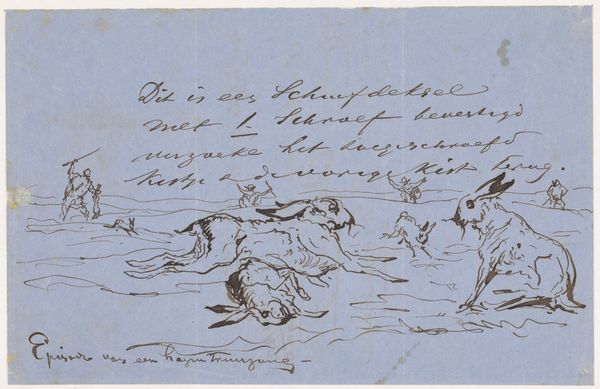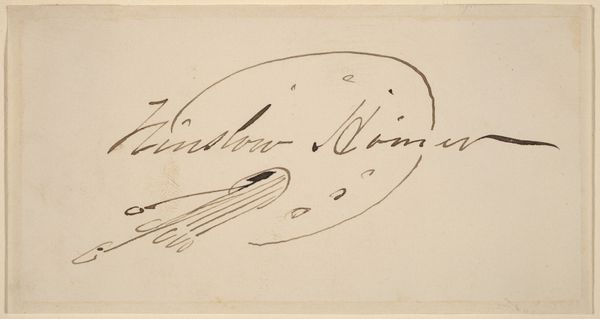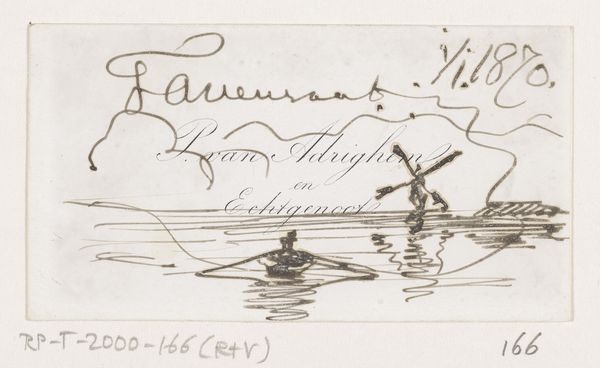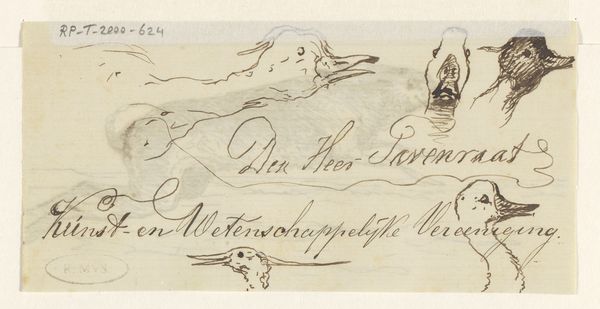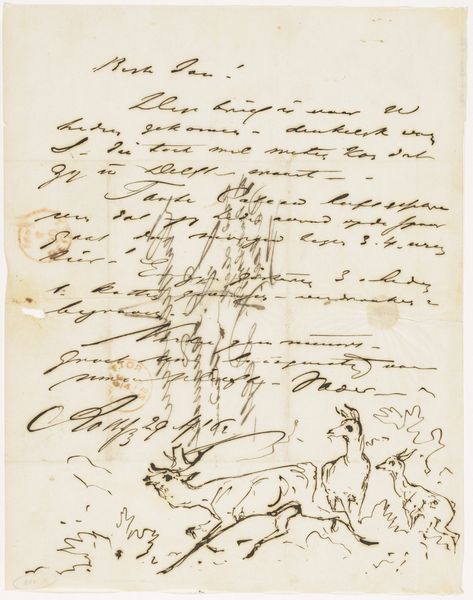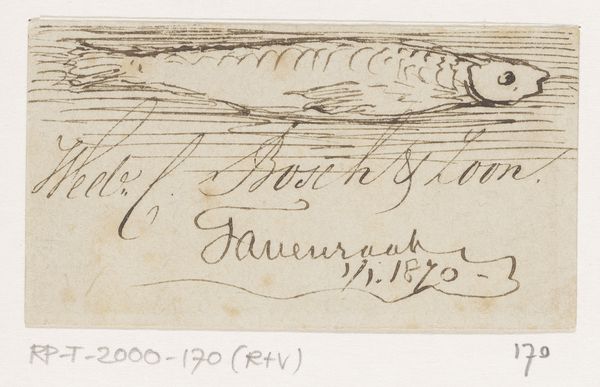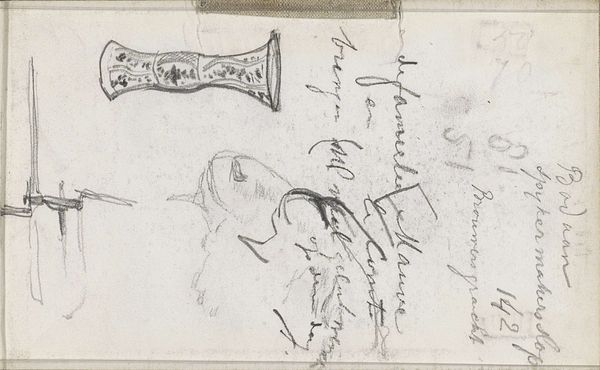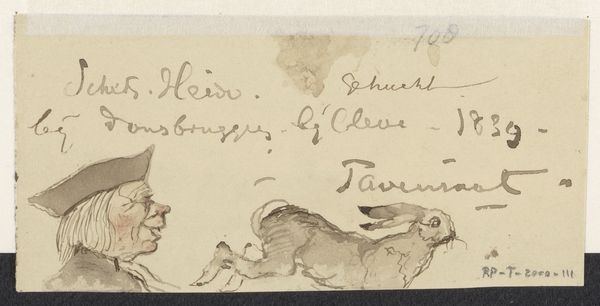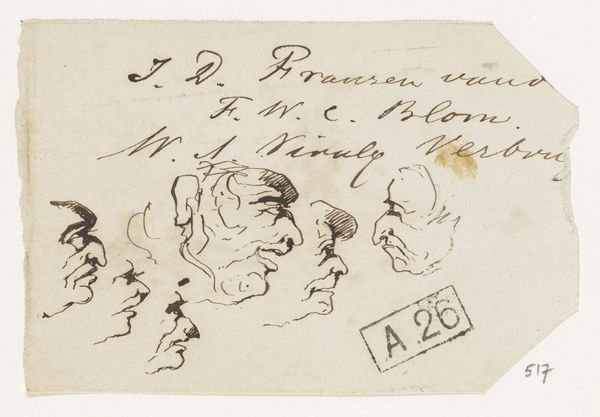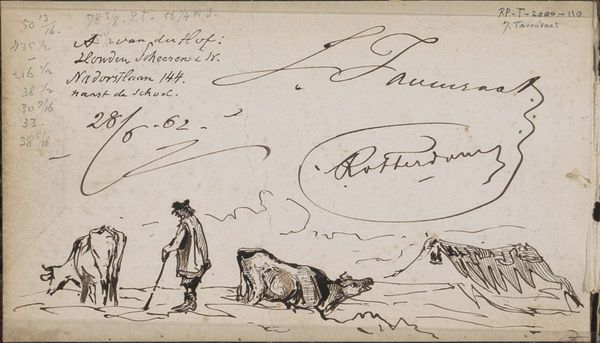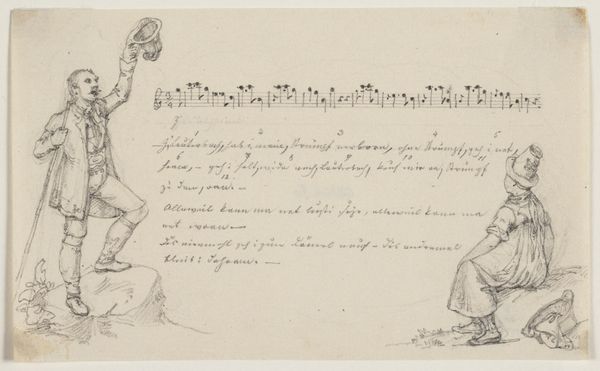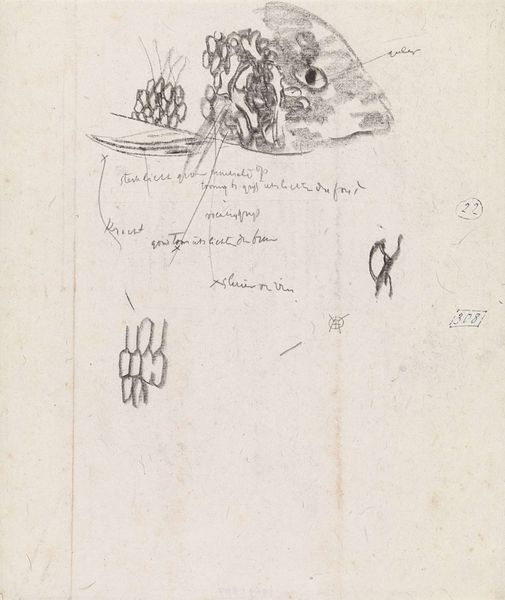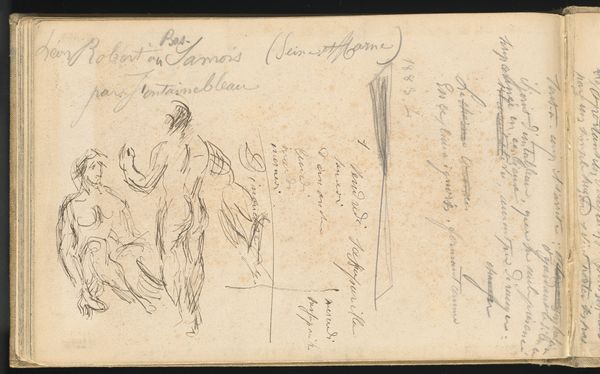
drawing, paper, ink
#
drawing
#
pen drawing
#
landscape
#
paper
#
ink
#
line
Dimensions: height 50 mm, width 91 mm
Copyright: Rijks Museum: Open Domain
Editor: So, here we have "Twee eenden," or "Two Ducks," a pen drawing in ink on paper, possibly from 1870 or 1871, by Johannes Tavenraat. It feels simple, almost like a quick sketch, but also carefully observed. What stands out to you in this piece? Curator: Immediately, the symbolism of the waterfowl calls to me. Ducks, across many cultures, represent adaptability, resourcefulness, and emotional stability, specifically those in a domestic setting, offering calm and familiarity. Does the quickness of the line suggest a memory being captured? Editor: That’s interesting… I hadn't considered their symbolic weight. The lines definitely look spontaneous. Curator: Look at how the calligraphic inscriptions, which could be easily passed as signature or title, are integrated almost as symbolic additions to the birds as an allegorical connection to the natural world. The flock of small birds overhead adds a sense of continuity between earth and sky. Editor: Yes, they act as a bridge. The writing feels like another element in the landscape. Do you think this integration was intentional? Curator: Absolutely, nothing here is accidental. Consider the single, confident line used to create each ripple on the water. Even these small details create layers of meaning: the symbolic, natural, emotional. It's a rich and subtly crafted world within a small frame. What do you make of the fact that they seem to swim toward birds swimming in the sky? Editor: That suggests aspiration and connection – bridging the earthly with the ethereal. It paints a picture of harmony. I initially saw it as just a sketch, but there's so much more depth to it. Curator: Indeed. Simple on the surface, but deeply layered with symbolic weight. We have come a long way with such humble tools.
Comments
No comments
Be the first to comment and join the conversation on the ultimate creative platform.
